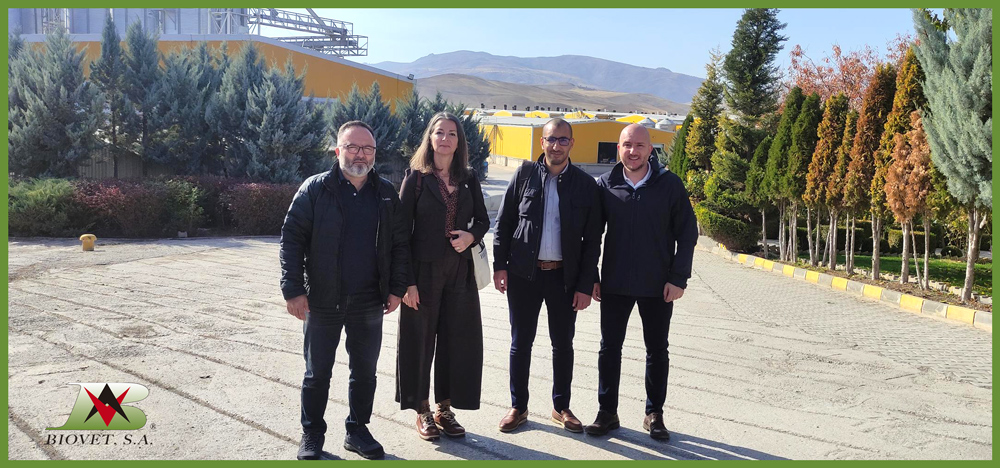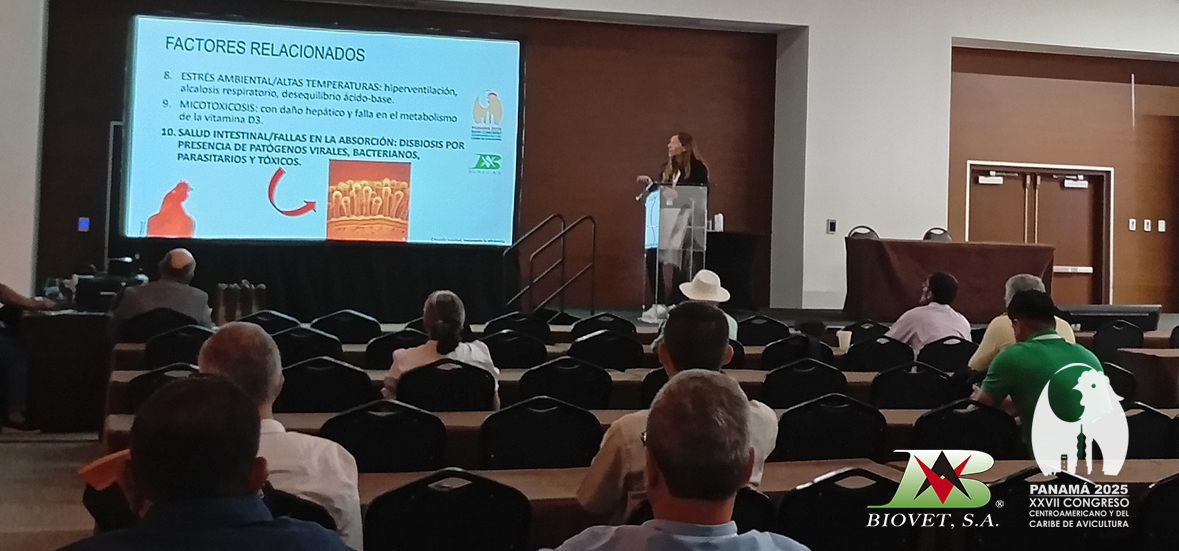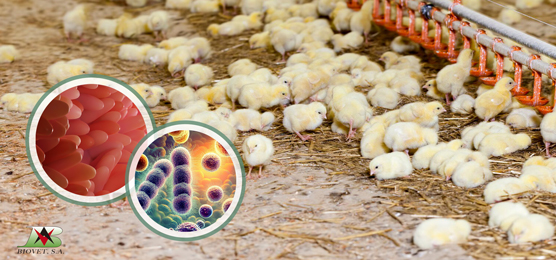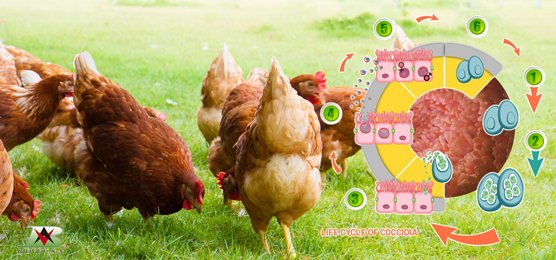Why can wet litter undermine the performance of your poultry farm?
In intensive poultry production, litter quality is often underestimated, until problems arise: footpad lesions, proliferation of pathogens, respiratory issues, poor growth, and lower carcass yield. The initial problem doesn’t begin with the litter itself, but it is undoubtedly a sign of deeper issues, such as digestive disturbances.
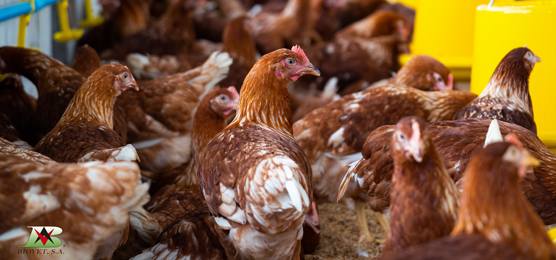
What causes excessive moisture?
While ventilation and drinking systems do play a role, the most common cause of wet litter is physiological: birds are excreting too much water. But why?
- Too rapid intestinal transit → the gut doesn’t absorb enough water.
- Inefficient digestion → more moisture remains in the faeces.
- Microbiota imbalances → increase in subclinical and clinical diarrhoea.
All this results in softer droppings, excessively moist litter, and ideal conditions for ammonia and its volatilization, foot lesions, and various diseases.
What are the real consequences?
Wet litter is not just an aesthetic issue. The technical and economic consequences are clear:
- Footpad dermatitis and breast blisters → carcass rejections at slaughter, issues with animal welfare regulations.
- Higher ammonia levels → respiratory problems, stress, and reduced growth.
- Increased costs for straw/shavings, ventilation, and maintenance.
- Poorer feed conversion and carcass performance.
In other words, poorly managed litter can cost kilos, euros, and reputation.
Prevention from within: improving digestion
Moisture control doesn’t start only with ventilation, it starts with gut health. Through nutrition, it is possible to:
- Slow down intestinal transit physiologically, enabling better absorption of both nutrients and water.
- Reduce the proliferation of pathogenic flora, which leads to watery droppings.
- Optimise nutrient digestibility, resulting in firmer stools.
- Enhance intestinal physiology, making it more resilient and functional.
Recommended solution: a natural digestive approach
To achieve this without resorting to pharmacological solutions, functional additives with digestive and microbiological activity are gaining ground.
One such solution is Alquerfeed Diatom AN, a natural combination of activated diatomaceous earth, pronutrients, and antimicrobial compounds that act synergistically to:
- Promote more effective digestion.
- Improve faecal quality and reduce litter moisture.
- Support a balanced gut flora without promoting resistance.
- Strengthen digestive physiology.
In practical terms, its use helps prevent pododermatitis, reduce environmental management costs, and improve zootechnical performance under real farm conditions.
Conclusion
Wet litter is a symptom. The cause often lies within the bird. By addressing digestion and intestinal balance through nutrition, we not only improve animal welfare, but also enhance overall production efficiency.
For farms seeking higher performance, fewer issues, and more sustainable production, Alquerfeed Diatom AN is a natural, effective, and easy-to-integrate solution.

